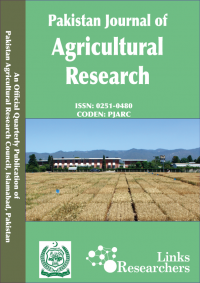Hassnain Shah, Hina Riaz, Nadeem Akmal , Muhammad Sharif* and Abdul Majid**
ABSTRACT
Livestock sector plays an important role in the economy of Pakistan with a share in national and agricultural GDP estimated to be 11.3% and 51.8% respectively. Pakistan accounts for 143 million animal heads in 2006. However, livestock population and fodder production are inversely related. The fodder area per adult animal unit has significantly declined from 0.067 ha to 0.035 ha and production declined from 1.31t to 0.80t from 1986 to 2006. Inadequate nutrition is one of the major constraints limiting livestock production in the country. Feed accounts for almost 70% of total cost of production of milk or meat. The trend for concentrate feeding to livestock is changing from the conventional concentrate feeding to a formulated compound feed. Considering the importance of livestock in the livelihood of the people, scarcity of green fodder three feed producing units were provided under Community Action for Livestock Development Project in Pakistan. From the technical and scientific points of view, the balance feed technology works reliably in improving livestock productivity. Breakeven Point, Internal Rate of Return (IRR) and Net Present Value (NPV) were calculated for investment appraisal of the feed mills. Assessment of the intervention based on the farmers’ perception regarding the acceptability and compatibility of the balance feed was done through survey of the participating and fellow farmers at the project sites. Paired sample ‘T’ test was used to compare the difference in milk yield. Farmers reported 0.5 to 2 liters per day increase in milk yield with the use of balance feed. The paired sample ‘T’ test depicts statistically significant difference (P < 0.05) in milk yield before and after the use of balance feed. The locally produced balance feed was found cost effective along with better animal productivity over the conventionally used cotton seed cakes. The intervention provided better competitiveness, sustainability, accessibility with inclusiveness of small holders along with scalability option for the entrepreneurs.
To share on other social networks, click on any share button. What are these?






